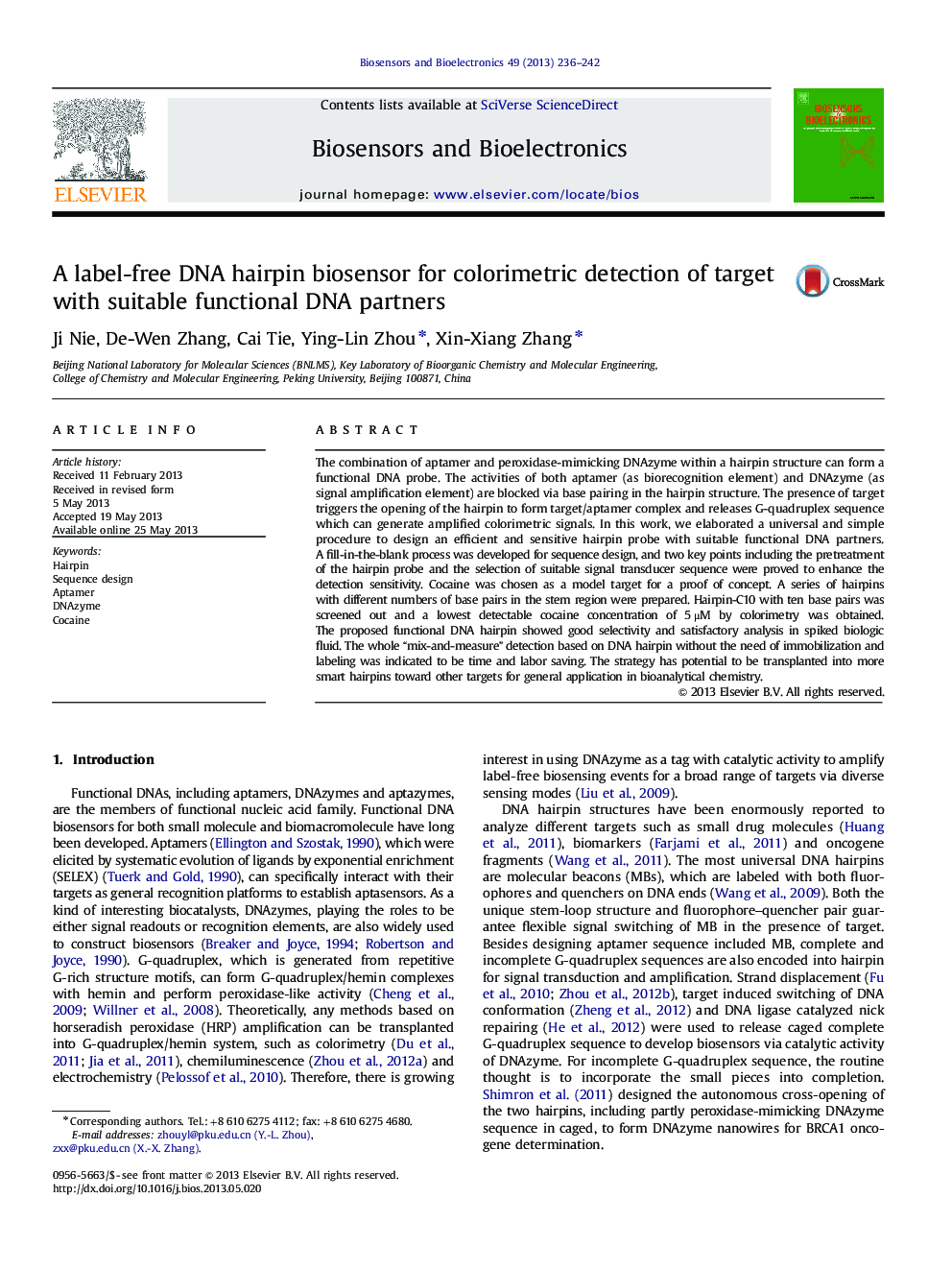| Article ID | Journal | Published Year | Pages | File Type |
|---|---|---|---|---|
| 7233920 | Biosensors and Bioelectronics | 2013 | 7 Pages |
Abstract
The combination of aptamer and peroxidase-mimicking DNAzyme within a hairpin structure can form a functional DNA probe. The activities of both aptamer (as biorecognition element) and DNAzyme (as signal amplification element) are blocked via base pairing in the hairpin structure. The presence of target triggers the opening of the hairpin to form target/aptamer complex and releases G-quadruplex sequence which can generate amplified colorimetric signals. In this work, we elaborated a universal and simple procedure to design an efficient and sensitive hairpin probe with suitable functional DNA partners. A fill-in-the-blank process was developed for sequence design, and two key points including the pretreatment of the hairpin probe and the selection of suitable signal transducer sequence were proved to enhance the detection sensitivity. Cocaine was chosen as a model target for a proof of concept. A series of hairpins with different numbers of base pairs in the stem region were prepared. Hairpin-C10 with ten base pairs was screened out and a lowest detectable cocaine concentration of 5 μM by colorimetry was obtained. The proposed functional DNA hairpin showed good selectivity and satisfactory analysis in spiked biologic fluid. The whole “mix-and-measure” detection based on DNA hairpin without the need of immobilization and labeling was indicated to be time and labor saving. The strategy has potential to be transplanted into more smart hairpins toward other targets for general application in bioanalytical chemistry.
Related Topics
Physical Sciences and Engineering
Chemistry
Analytical Chemistry
Authors
Ji Nie, De-Wen Zhang, Cai Tie, Ying-Lin Zhou, Xin-Xiang Zhang,
